AI音声解説※一部単語の読み間違いがございます。ご了承ください。
解説 / Description
デンキウナギ(電気鰻)は、その名の通り、生物界最強クラスの発電能力を持つことで知られる南米原産の大型魚です。最大860ボルトにも達する電撃は、獲物の捕獲や外敵からの防御に用いられます。その姿形はウナギに似ていますが、分類学的には全く異なり、ナマズやコイに近い「ナイフフィッシュ」の仲間です。2019年の研究により、従来1種と考えられていたデンキウナギ属は、実際には3つの異なる種(エレクトリクス、バリイ、ボルタイ)に分類されることが判明し、科学界に衝撃を与えました。その圧倒的な存在感と特異な生態から、一部のアクアリストにとって究極の飼育対象とされていますが、飼育には極めて高度な安全管理と大型設備が不可欠であり、「ペット」というよりも「水中の高電圧電気製品」として扱うべき生物です。 The Electric Eel is a large South American fish renowned for possessing one of the strongest electrical generation capabilities in the biological world. It can unleash electric shocks of up to 860 volts, used for hunting prey and defending against predators. Although its elongated body resembles a true eel, it is taxonomically distinct, belonging to the “knifefish” order, which is more closely related to catfish and carp. A 2019 study shocked the scientific community by revealing that the long-held belief of a single species was incorrect; the genus *Electrophorus* actually comprises three distinct species: *E. electricus*, *E. varii*, and *E. voltai*. Its overwhelming presence and unique biology make it an ultimate challenge for some aquarists. However, keeping one requires extremely advanced safety management and large-scale facilities; it should be treated less like a pet and more like an “underwater high-voltage electrical appliance.”
基本情報 / Basic Information
| 学名 / Scientific Name | Electrophorus electricus (エレクトリクス) Electrophorus varii (バリイ) Electrophorus voltai (ボルタイ) |
|---|---|
| 通称 / Common Name | デンキウナギ(電気鰻)Electric Eel |
| 分類 / Family | デンキウナギ目 ギュムノートゥス科 (デンキウナギ科)Order Gymnotiformes, Family Gymnotidae |
| 英名 / English Name | Electric Eel |
| 分布 / Distribution | 南米(アマゾン川、オリノコ川流域)。種によって生息域が異なり、*E. electricus*はギアナ楯状地、*E. varii*はアマゾン盆地低地、*E. voltai*はブラジル楯状地に分布します。South America (Amazon and Orinoco river basins). Distribution varies by species: *E. electricus* inhabits the Guiana Shield, *E. varii* the Amazonian lowlands, and *E. voltai* the Brazilian Shield. |
| 最大体長 / Max Size | 一般に1.2メートルを超える個体が多く報告されており、最大で2.5メートルに達するとも言われています。Individuals exceeding 1.2 meters are commonly reported, with some sources stating they can reach up to 2.5 meters. |
| 寿命 / Lifespan | 非常に長寿であり、飼育下では20年を超えて生きた記録があります。Extremely long-lived; there are records of individuals surviving over 20 years in captivity. |
飼育環境 / Aquarium Environment
| 水槽サイズ / Tank Size | 終生飼育には最低でも幅180cm×奥行き60cm以上(例:180cm規格水槽、約650L)の大型水槽が必須です。「60cm水槽や120cm水槽で終生飼育可能」という情報は誤りであり、成長に伴い体が収まらなくなります。A large tank of at least 180cm width x 60cm depth (approx. 650L) is mandatory for lifelong care. Information suggesting a 60cm or 120cm tank is sufficient is incorrect, as the fish will outgrow it. |
|---|---|
| 水温 / Temperature | 24℃ – 28℃ |
| 水質 / Water Quality | 水質への適応力は比較的高いですが、極端な酸性(低pH)は避けるべきです。肉食魚で水を非常に汚しやすいため、最強力なろ過システムと、定期的な大規模水換えが不可欠です。Relatively adaptable to water quality, but extremely acidic conditions (low pH) should be avoided. As a carnivorous fish, it heavily pollutes the water, making a powerful filtration system and frequent, large-scale water changes essential. |
| レイアウト / Layout | 体を傷つけないよう、目の細かい砂(例:ボトムサンド)を厚めに敷くことが望ましいです。ベアタンク(底砂なし)での飼育は推奨されません。また、大型で頑丈な塩ビパイプなどを設置し、安心して隠れられる場所を提供するとストレス軽減に繋がります。A thick layer of fine-grained sand is recommended to prevent injury. Bare-bottom tanks are not advised. Providing hiding spots using large, sturdy PVC pipes can help reduce stress. |
| 注意点 / Precautions | デンキウナギは「絶対的空気呼吸者」であり、水中の酸素だけでは窒息してしまいます。必ず水面まで顔を出して呼吸できるスペースを確保してください。また、飛び出す力も強いため、水槽には重く頑丈な蓋が必須です。Electric eels are “obligate air-breathers” and will suffocate if they cannot access the surface. Always ensure there is space to breathe air. A heavy, secure lid is mandatory as they are powerful jumpers. |
餌と給餌 / Feeding
| 餌の種類 / Diet | 完全な肉食性です。幼魚期は冷凍アカムシや活エビ、メダカなどを与えます。成長した個体には、生きた金魚やドジョウ、あるいは冷凍のワカサギ、アジなどを丸ごと与えます。Strictly carnivorous. Juveniles can be fed frozen bloodworms, live shrimp, or rice fish. Adults should be given live goldfish, loaches, or whole frozen fish like smelt or horse mackerel. |
|---|---|
| 給餌のポイント / Feeding Tips | 夜行性であるため、消灯後や照明が暗い時間帯に与えると食いが良い傾向があります。非常に水を汚すため、食べ残しが出ない量を調整し、残った場合は速やかに取り除いてください。Being nocturnal, they tend to eat better after lights-out or in dim lighting. They are extremely messy eaters; adjust feeding amounts to avoid leftovers and remove any uneaten food immediately. |
性格と混泳 / Temperament and Tank Mates
| 性格 / Temperament | 基本的に夜行性で、日中は物陰に潜んでじっとしています。視力は著しく退化していますが、「電気定位(エレクトロロケーション)」という能力で微弱な電気を放ち、周囲の状況を正確に把握しています。Primarily nocturnal, typically hiding during the day. Their eyesight is poor, but they use “electrolocation,” emitting weak electrical pulses to accurately perceive their surroundings. |
|---|---|
| 混泳の相性 / Compatibility | 混泳は絶対に不可能です。同種・他種問わず、口に入るサイズの生物は全て餌とみなされます。また、彼らが放つ強力な電撃は、他のいかなる生物にとっても致命的であるため、必ず単独で飼育してください。Tank mates are absolutely not possible. Any creature that can fit in its mouth, including its own species, will be seen as food. Furthermore, its powerful electric shock is lethal to any other organism. Must be kept alone. |
病気と対策 / Diseases and Prevention
| かかりやすい病気 / Common Diseases | 水質悪化による皮膚病(肌荒れ)や、エロモナス症などの細菌感染症が主です。また、底砂に潜る際に体を擦って傷を負い、そこから感染を起こすケースもあります。Mainly skin diseases and bacterial infections (like Aeromonas) caused by poor water quality. Injuries sustained from burrowing in the substrate can also lead to secondary infections. |
|---|---|
| 対策と予防 / Prevention | 最強力なろ過システムを維持し、水を清浄に保つことが最大の予防策です。高水温(特に夏場)では水質悪化が早まるため、水換えの頻度を上げるなどの対策が必要です。体を傷つけないよう、底砂の選定も重要です。Maintaining a robust filtration system and pristine water quality is the best prevention. Water deteriorates faster at high temperatures (especially in summer), requiring more frequent water changes. Substrate selection is also crucial to prevent injuries. |
増やし方(繁殖) / Breeding
| 繁殖形態 / Reproduction | 現地では水位が下がる乾季に繁殖します。オスは自らの唾液で泡の巣(バブルネスト)を作り、メスが産卵します。産卵後、オスは巣に留まり、孵化した稚魚を外敵から守る行動が知られています。In the wild, they breed during the dry season when water levels drop. The male builds a bubble nest from his saliva, where the female lays eggs. The male is known to guard the nest and the fry after hatching. |
|---|---|
| 繁殖のポイント / Breeding Tips | 飼育下での繁殖は極めて稀であり、水族館レベルの広大な施設と乾季の再現など、高度な環境管理が必要です。ペアの入手自体が困難であり、個人アクアリストによる繁殖は現実的ではありません。Breeding in captivity is extremely rare, requiring vast, aquarium-grade facilities and complex environmental manipulation (like simulating the dry season). Obtaining a pair is difficult, making breeding unrealistic for private aquarists. |
雑学と豆知識 / Trivia and Fun Facts
| 雑学・豆知識 / Trivia & Fun Facts | デンキウナギの体は、まさに「生きた電池」です。体の約80%は発電器官で占められ、心臓や消化器官などの内臓は全て、体長の前方20%のスペースに押し込まれています。この発電器官は、発電細胞(エレクトロサイト)と呼ばれる特殊な細胞が数千個も直列に繋がった構造をしています。これは私たちが乾電池を直列に繋ぐと電圧が高まるのと同じ原理であり、18世紀の物理学者ボルタは、まさにこのデンキウナギの構造にヒントを得て、世界初の化学電池「ボルタの電堆」を発明しました。電圧の単位「ボルト(Volt)」は、彼の名前に由来します。 この生物が科学界に与えた衝撃は、21世紀になっても続いています。1766年の記載から約250年間、デンキウナギは「1属1種(*Electrophorus electricus*)」と固く信じられてきました。しかし2019年、最新のDNA解析や形態学の研究により、実際には3つの異なる種(*E. electricus*、*E. varii*、*E. voltai*)に分類されることが発表されました。中でも新種*E. voltai*(ボルタイ)は、電池の発明者ボルタに献名され、最大860ボルトという驚異的な電圧を記録。「生物最強の発電能力」としてギネス世界記録にも認定されています。 日本の水族館では、クリスマスシーズンにデンキウナギが放電する電力でクリスマスツリーを点灯させるイベントが風物詩となっており、その目に見えない力を視覚的に伝えています。The electric eel’s body is truly a “living battery.” About 80% of its body is occupied by electric organs, with all vital organs like the heart and digestive tract compressed into the anterior 20%. These organs consist of thousands of specialized cells called “electrocytes” connected in series. This is the same principle by which connecting dry cells in series increases voltage. In the 18th century, physicist Alessandro Volta was inspired by this very structure to invent the world’s first chemical battery, the “voltaic pile.” The unit of voltage, the “Volt,” is named after him. This creature’s impact on science continues into the 21st century. For nearly 250 years since its description in 1766, the electric eel was firmly believed to be a single species (*Electrophorus electricus*). However, in 2019, modern DNA analysis and morphological research revealed it actually comprises three distinct species: *E. electricus*, *E. varii*, and *E. voltai*. The new species *E. voltai*, named in honor of Volta, was recorded producing a staggering 860 volts, earning it a Guinness World Record for the “most powerful electric shock generated by an animal.” In Japanese aquariums, a popular seasonal event involves using the electric eel’s discharge to light up a Christmas tree, visually demonstrating its invisible power. |
|---|
まとめ / Conclusion
デンキウナギは、その圧倒的な力と科学史にも名を刻むほどの特異な生態で、私たちを魅了してやみません。しかし、その魅力は「致死的な危険性」と表裏一体です。飼育を検討する上で最も重要なのは、飼育技術以前の「徹底した安全管理」です。 The electric eel fascinates us with its overwhelming power and unique biology, which is even etched into the history of science. However, this fascination is intertwined with “lethal danger.” The most critical aspect of considering keeping one is “rigorous safety management,” which precedes any husbandry skill.
デンキウナギの電撃は、成人の人間であっても心停止や呼吸麻痺を引き起こす威力があります。飼育者は、この生物を「ペットの魚」としてではなく、「水中に設置された、絶縁されていない高電圧の電気製品」として認識しなくてはなりません。水槽のメンテナンスは、必ず漏電遮断器を設置した電源を用い、シリコン製やプラスチック製の絶縁器具のみで行ってください。濡れた手で水や器具に触れることは絶対に避け、一般的なゴム手袋は高電圧を貫通するため無効であると知るべきです。法的に飼育が禁止されているわけではありませんが、終生飼育する重い責任と、家族や社会に対する安全配慮義務を深く自覚できるアクアリストのみに許される、究極の飼育対象と言えるでしょう。 An electric eel’s shock is powerful enough to cause cardiac arrest or respiratory failure even in an adult human. The keeper must recognize this creature not as a “pet fish,” but as an “uninsulated high-voltage electrical appliance submerged in water.” All aquarium maintenance must be conducted using power sources protected by a Ground-Fault Circuit Interrupter (GFCI) and only with insulated tools (silicone, plastic). Never touch the water or equipment with wet hands, and understand that standard rubber gloves are useless as the high voltage can penetrate them. While not legally prohibited, keeping an electric eel is an ultimate challenge reserved only for aquarists who fully comprehend the heavy responsibility of lifelong care and their duty to ensure the safety of their family and society.
▶ 記事の生体をYahooで買う







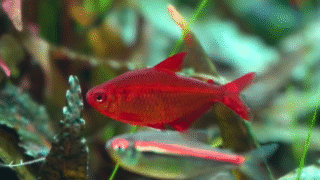
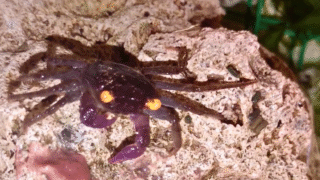
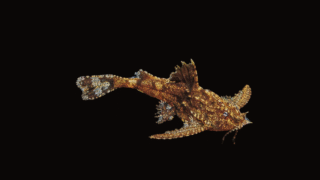
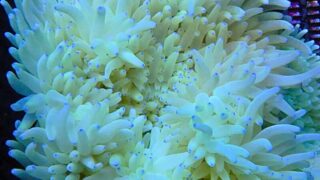
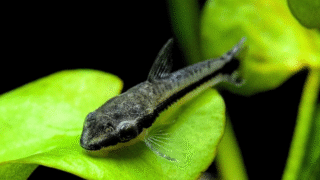
コメント